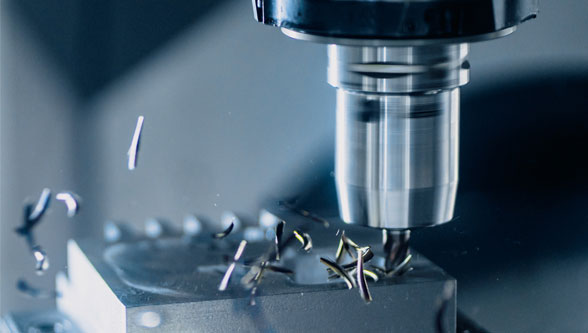Cutting-Edge CNC Techniques: Transforming Energy-Intensive Parts Manufacturing

In the world of manufacturing, precision and efficiency are paramount. As industries evolve and technology advances, the demand for energy-intensive parts has soared. These components power everything from aerospace engines to renewable energy systems. However, the environmental impact of such production processes has raised concerns. Enter Cutting-Edge CNC Techniques, a revolutionary approach that is transforming energy-intensive parts manufacturing.
The Energy-Intensive Challenge
Energy-intensive parts manufacturing has historically posed a substantial environmental challenge. Traditional methods, which involve subtractive manufacturing processes like forging and casting, demand copious amounts of energy and raw materials. These processes produce a significant carbon footprint, contributing to environmental degradation and climate change.
The CNC Revolution
Computer Numerical Control (CNC) machining has been a game-changer in manufacturing for decades. It involves using computers to control machine tools and 3D printers, guiding them with unparalleled precision. CNC machining was already a power and energy CNC machine tools sustainable option than many traditional methods, but recent advancements have made it even more eco-friendly.
Advancements in CNC Techniques
1. Precision and Efficiency
One of the key benefits of CNC techniques is their unparalleled precision. These machines can execute complex tasks with minimal error, reducing the need for material wastage. This precision significantly cuts down on energy and resource consumption.
2. Additive Manufacturing
Additive manufacturing, often referred to as 3D printing, is a subset of CNC techniques. It builds objects layer by layer, using only the necessary material. This minimizes waste and allows for the creation of complex shapes that were previously impossible with traditional methods. Additive manufacturing is a significant step toward sustainable production.
3. Sustainable Materials
CNC machining techniques also make it easier to work with sustainable materials. Engineers can select materials that have a lower environmental impact, such as recycled or bio-based options, without compromising on performance.
4. Reduced Energy Consumption
CNC machines are designed to be energy-efficient. They consume only the power needed for the specific task at hand, eliminating the energy waste associated with traditional manufacturing methods.
Applications Across Industries
Cutting-Edge CNC Techniques have found applications across various industries:
1. Aerospace
Aerospace components, known for their energy-intensive manufacturing processes, are now being produced with CNC techniques. The precision and efficiency of CNC machining reduce the overall energy consumption in the production of aircraft parts.
2. Renewable Energy
The renewable energy sector relies heavily on complex, energy-intensive components. CNC techniques are used to manufacture wind turbine blades, solar panels, and other crucial parts with minimal environmental impact.
3. Automotive
Automotive manufacturers are adopting CNC techniques to create lighter and more fuel-efficient vehicles. This helps reduce greenhouse gas emissions and improve overall energy efficiency.
Environmental Benefits
The adoption of Cutting-Edge CNC Techniques offers several environmental benefits:
1. Reduced Carbon Footprint
By consuming less energy and materials, CNC techniques significantly reduce the carbon footprint associated with parts manufacturing.
2. Lower Waste Generation
The precision of CNC machining minimizes waste, resulting in fewer discarded materials and a decrease in landfill waste.
3. Sustainable Production
CNC techniques enable the use of sustainable materials, further contributing to a more environmentally friendly manufacturing process.
Conclusion
Cutting-Edge CNC Techniques are revolutionizing energy-intensive parts manufacturing by promoting precision, efficiency, and sustainability. As industries seek to reduce their environmental impact, CNC machining emerges as a viable solution. The adoption of these techniques not only lowers energy consumption and waste generation but also opens doors to innovative material choices. With CNC techniques, manufacturers can meet the demands of a changing world while protecting the planet for future generations.







